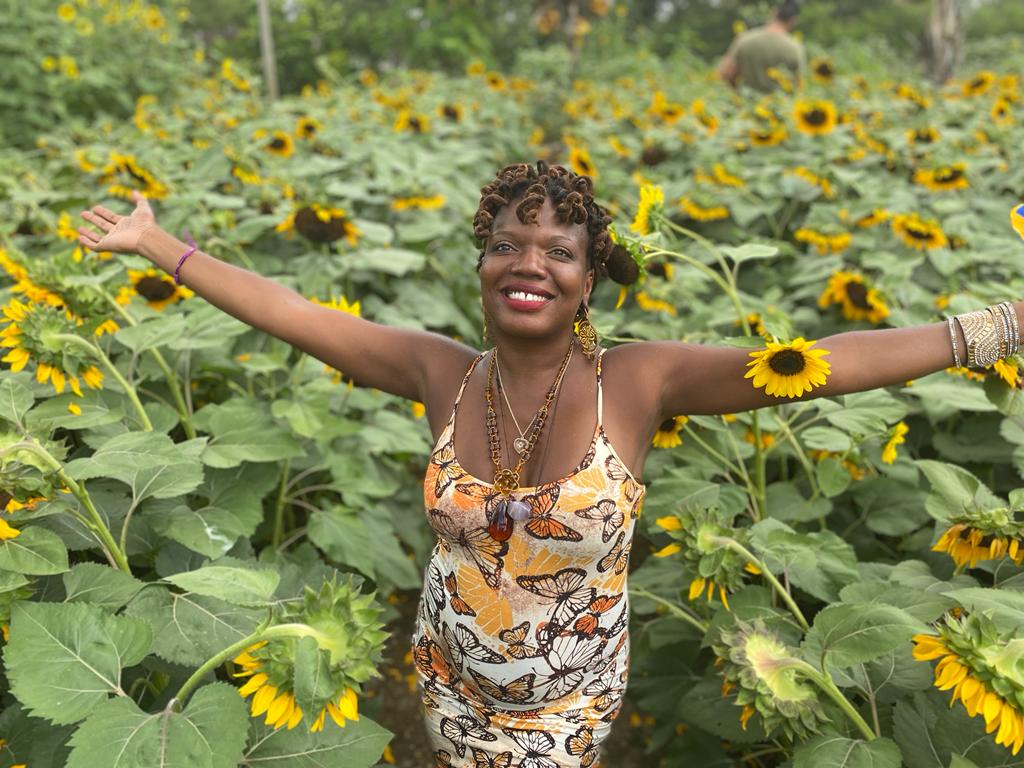By Assata Akil
There was a time when, if someone couldn’t reach you, they simply… couldn’t reach you.
No pings. No buzzes. No little green dot saying you’re online. Just a moment of peace, mystery, or intentional absence.
It might’ve started with the pager—that first little beep of being away but still accessible. Then came the cell phone, the internet, the social feed. Then the TV stayed on all night. Not sure if any of you remember this, but there was a time when the TV actually shut off. It signed off. The screen went dark. You either went to bed, or you did something…real.
We don’t get those natural endings anymore. Not in TV, not in life, and definitely not in love.
Now, we are never off. The internet has turned into a 24/7 highlight reel, where our lives—and our relationships—are documented, filtered, liked, archived, and dissected by loved ones and strangers alike.
And while technology has given us new ways to connect, it’s also given us new obstacles no generation before the ’90s had to face.
The Modern Dilemma: Present Online, Absent in Love
Social media has become a public diary. Our intimate, fun, sad, and awkward moments are now content—curated and shared for engagement. But how we introduce and represent our relationships online is something that deserves more thought.
Because in the digital world, relationship health takes on a new form.
It’s no longer just about communication, trust, or chemistry. It’s about what you post. How you post it. Who you allow into your relationship through a screen. It’s about privacy vs. publicity—and the fine line between authenticity and performance.
A recent study from Boston University found that “increased time spent on social media platforms was associated with lower relationship satisfaction and more conflict.” That tension isn’t imagined—it’s real.
Intimacy vs. the Performance
Deciding whether or not to post your partner isn’t a simple decision anymore.
You could be living together, sharing bills, raising kids—and still hesitate before uploading that first photo. Why? Because the moment you share it, it becomes everyone else’s business.
You open the door to commentary, comparison, questions, assumptions, and yes, judgment.
And yet—none of it makes love more real.
Remember: just because others are watching doesn’t mean your love needs to perform.
You don’t need to post your relationship for it to be real.
Real love lives in the moments you don’t photograph.
It grows in the quiet places, not in the comment section.
Some of the strongest connections are the ones most protected.
How to Protect Love in the Scroll: Rules of Engagement (and Disengagement)
- Think before you post. Ask yourself: Am I sharing this for us, or for attention?
- Establish social boundaries. Discuss what feels comfortable to share online—and what belongs only to the two of you. A study on location-sharing apps showed that couples with clear digital boundaries experience more intimacy and less friction.
- Never fight on social media. What could’ve been resolved over time becomes public debate. What was private becomes performative. Temporary emotions become permanent posts. Once others weigh in, healing gets harder. The internet never forgets—and neither does the audience.
- Keep some moments sacred. Just because something happened doesn’t mean it needs to be shared. The best moments aren’t always on camera.
- Avoid subliminals. Don’t weaponize your feed. If there’s an issue, talk—don’t type.
- Don’t judge your relationship by someone else’s highlight reel. According to a Carnegie Mellon study, some couples over-post to compensate for insecurity. So those who seem “perfect” might actually be struggling the most.
To Post or Not to Post
Announcing your relationship can feel beautiful—or terrifying.
You want to share your joy. You want people to know. But you’re also scared: of being judged, of things not working out, of what people will say if it all unravels.
You might wonder: What if it doesn’t work out? What if I have to delete all these photos later? Will people think we failed?
That fear is real—and common.
But fear isn’t the best place to make that decision from.
If you’re holding back from sharing because you’re protecting your peace, that’s healthy.
But if you’re holding back because you’re afraid it will fall apart—then maybe the question isn’t about the post.
It’s about the relationship.
Whether you choose to share it or not, make sure your reason is rooted in truth, not fear.
When the Past Lives in Your Feed: Digital Photo Albums of Relationships Past
Keeping old pictures posted gives the public a timeline—a visible record of what once was.
What used to live in a shoebox or a dusty photo album is now a scrollable archive. Your past is out there—available for curiosity, comparison, and quiet judgment from people who shouldn’t be part of your love story.
Even if strangers shouldn’t matter… they kind of do.
Especially digitally.
I mean—isn’t that what social media is all about?
If it didn’t matter, would it even be there?
We say we’re unbothered. That we’re private. That it’s nobody’s business.
But let’s be real—none of that fits the monitored world we’re living in.
Social media is other people’s business. It’s built on reactions, visibility, and feedback. So when we leave up old photos, when we check who liked what, when we get that quiet gut-punch from a memory we didn’t ask to relive—of course we feel something.
If we were truly unbothered… we wouldn’t still be watching the show.
These claims of privacy and detachment?
They don’t align with how digital life actually works.
I’m not trying to ruffle feathers.
Well… maybe I am.
Because it’s time we face these digital truths, speak honestly, and fight the distance that’s growing between real life and the online version of it.
Analog Love in a Digital Age
If we’re going to be in relationships in the digital age, we need to respect them with some old-school values.
Patience. Boundaries. Consideration. Discretion. Respect.
Because love today still requires the same things it always did—just with a smarter understanding of the world we’re sharing it in.
So let’s be fair with our partners.
Because loving in this digital age isn’t natural—
but how we treat each other can be.
About the Writer:
Assata Akil is an artist, author, and storyteller whose works explore identity, strength, and femininity. She is the author of Ear Candy, Ear Candy: The Fetish Edition, and Petty Cache. Her latest project, IFE Unveiled, combines literature and visual art, showcased at SoHo Galleries in Mérida, Mexico. Based in Mérida with her family, Assata continues to inspire through her bold and evocative creations.





